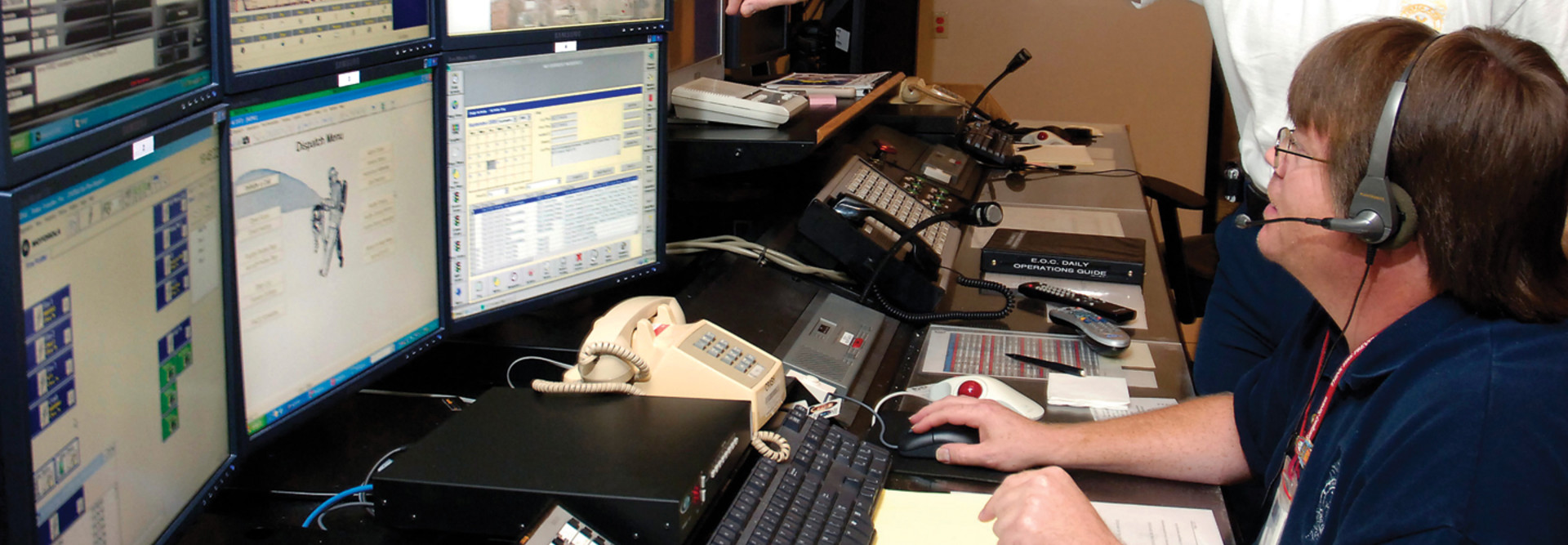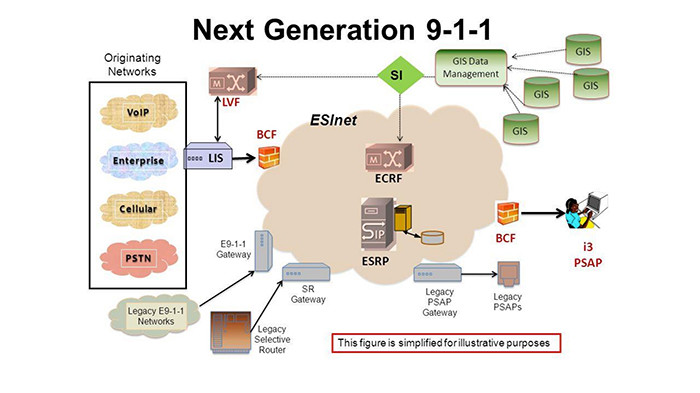A simplified illustrated model of an NG911 system. Source:: charlestoncounty.org
In addition to technical considerations, there are different forms and governance structures ESInets can follow.
In Maine, Jacques notes that the state’s NG911 system is run via a service-based contract. “We don’t own anything,” she says. “They put in the equipment, run the equipment, provide training, 24/7 support.”
Maine runs its own ESInet for the entire state. But some states, like Texas, offer different regions the ability to create their own ESInets.
“It’s supposed to be interoperable,” Jacques notes. “As long as the system is built to standards, it really shouldn’t matter whether you have vendor A or vendor B for PSAP equipment. We should be able to accept the data and look at the data between us.”
Kelli Merriweather, executive director of Texas’ Commission on State Emergency Communications, oversees a program that funds 911 services and provides assistance to 21 regions in Texas, most of them rural areas. The agency has established a cooperate contract under the state’s umbrella telecommunications contract that established an NGCS offering.
Other regions in Texas have their own ESInets, including the Dallas-Fort Worth, Houston, Austin and San Antonio metro areas.
Merriweather notes that cost and funding are key considerations for state and local agencies, and that transitioning to NG911 means that PSAPs are often paying for legacy and next-generation systems simultaneously for some period of time. “You want to control for that period of time,” she notes.
ESInet construction takes planning and a long time, Merriweather notes. NG911 requires IP-capable equipment as well as updated geographic information system data, which can be a painstaking process. GIS is “a complex mix of database management, display technology, and analysis tools that can be used to create maps, solve problems that have a spatial context, and enable processes such as emergency call routing that leverages the locations of features,” 911.gov notes.
MORE FROM STATETECH: Find out how EMS agencies have used tablets to meet challenges in the field.
How Does an ESInet Connect to NG911?
Once an ESInet is in place, PSAPs can build NG911 on that foundation. As NENA notes, NG911 uses “service-oriented architecture, software applications and data content to intelligently manage and control its IP based processes.”
NG911 is driven by software and databases and enables “an exponential increase in available data and information sharing possibilities.” Additionally, NG911 “provides flexibility and individual agency choice to determine information needs based on predetermined business/policy rules,” NENA states.
In California, CalOES has established different pricing tiers based on the bandwidth PSAP needs, ranging from 1 megabit per second service up to 100Mbps and even 1 gigabit per second connections.
“We’ll be able to ingress photos, videos and other data sources from the originating 911 call path side,” Currier says.
PSAPs can also easily upgrade their bandwidth. “We have got the ability to grow the network to support the throughput for data,” he says.
However, just because an ESInet enables NG911 services like video and photo collection doesn’t mean a state or a region will use those apps, Jacques says.
“I think that we will proceed cautiously,” she says. “Our PSAPs are really sensitive to the fact that they don’t want to be inundated with video.”
Maine’s rules, she says, are not “defined to the point that, policywise, where we’re ready for that.”










